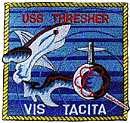

|
|
ON
PATROL
| |
1.
The first run of a new model sub is aways a heady
thing. All the time, work, and money invested, not
to mention the expectations of the crowd, can all lead
to disaster if you're not careful. If at all possible,
take an experienced r/c sub vet with you to double
check your preparations. One missed item on your pre-run
checklist can ruin your day. Pick a spot with clear
water and bottom features you are familiar with.
|
| |
2.
A good plan is to commence with surface running
first. Get the feel of how she handles, the response
you can expect from rudder and throttle commands. When
you're comfortable, bring the boat in and park it for
a static dive next to the shore. Command a vent and
check the trim. Adjust as necessary. Often different
water densities will require minor ballast adjustments.
|
| |
3.With
a good final trim, blow to the surface, make a circuit
and aim the boat towards you. Command a dive. As
she dips under observe her behavior. She should level
off at periscope depth. If so, you're on your way
(if the worst happens, she'll be heading to shore
at your feet and the recovery will be easy). As you
get to know your new command, keep an eye on run
time. Don't want to end on the low note of a flat
battery (with a standard 1500mah NiCad I can get
a run time of approximately 1 hour -- your results
may vary).
|
| |
4.
My own Permit proved to be a wonderful performer. Docile
underway, she turns smartly and has gobs of power
in reserve for getting out of trouble. With the planes
mounted high in the sail she has a tendency to be
drawn upward by surface capture at periscope depth
-- just like the real thing. I always run with the
attack scope extended to help gauge my depth. As
idiosyncrasies go it proved to be minor. Every boat
has them.
|
| |
|
| |
Home
|
|
|
|



